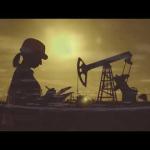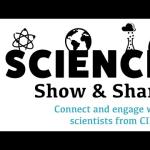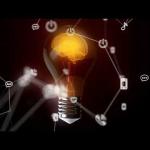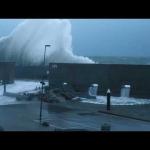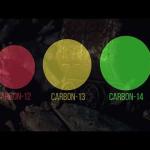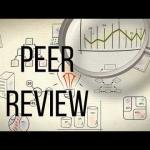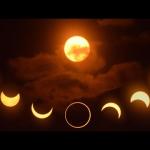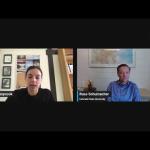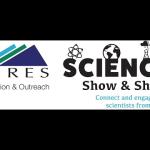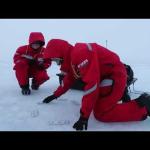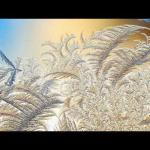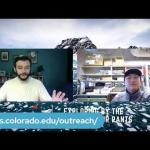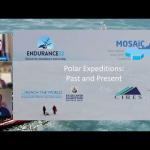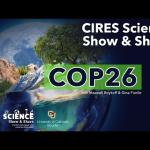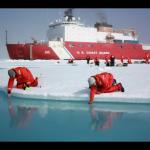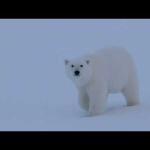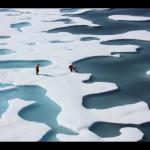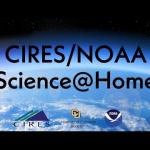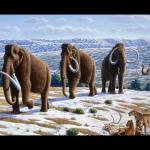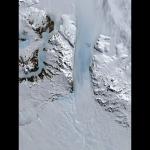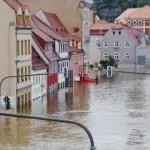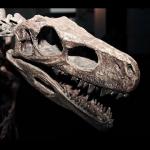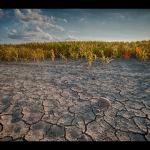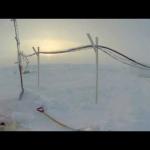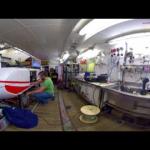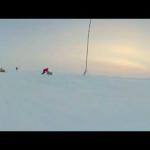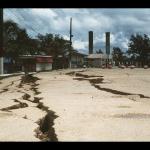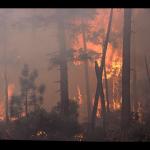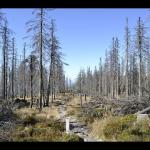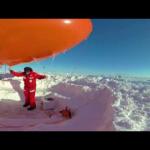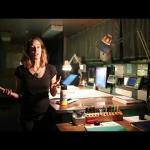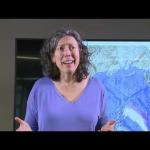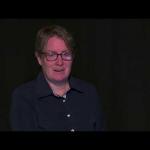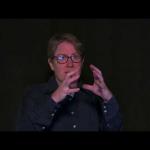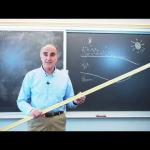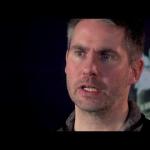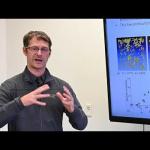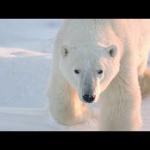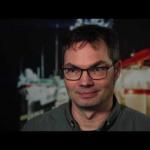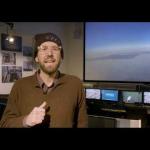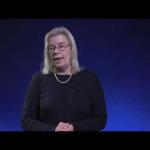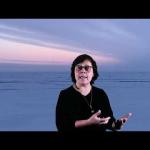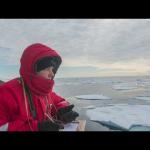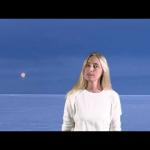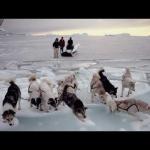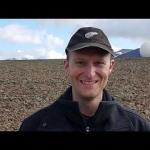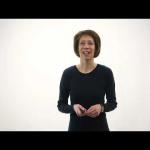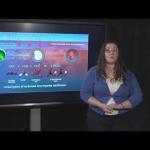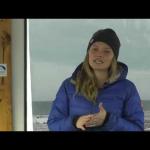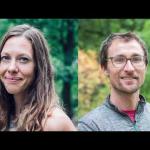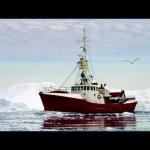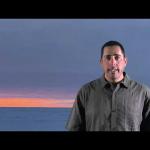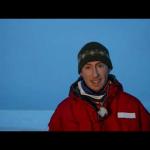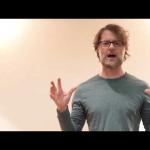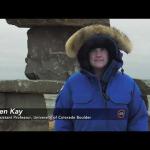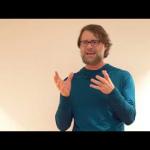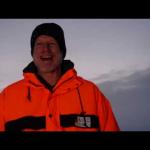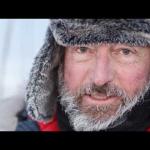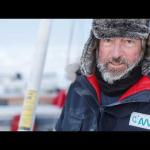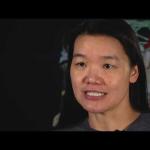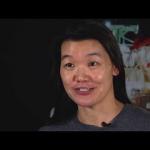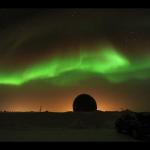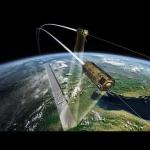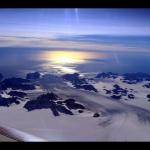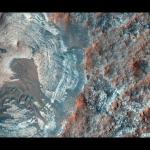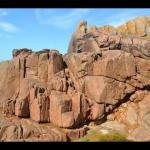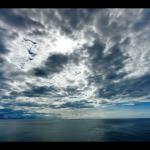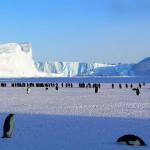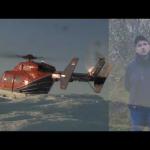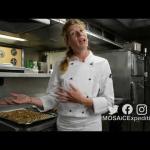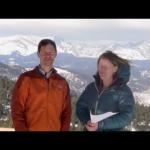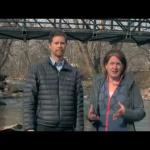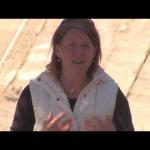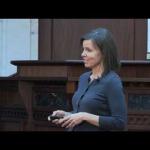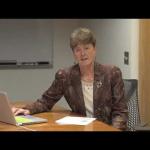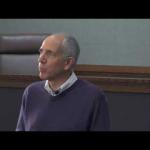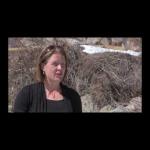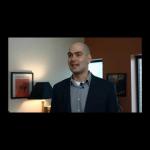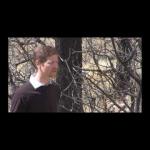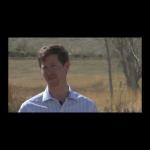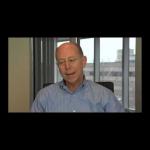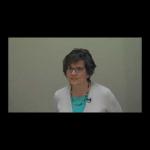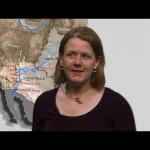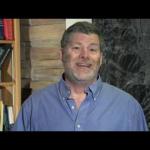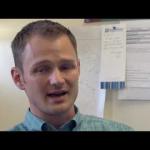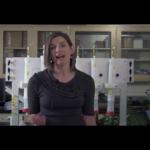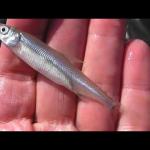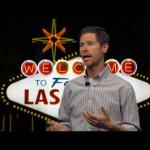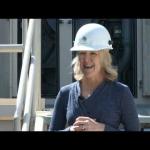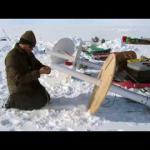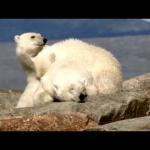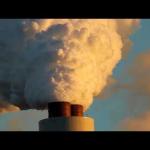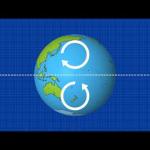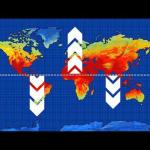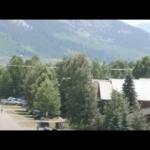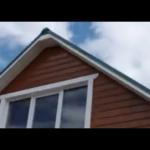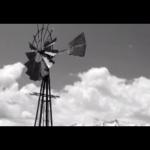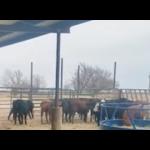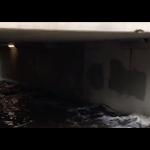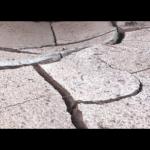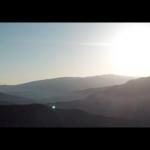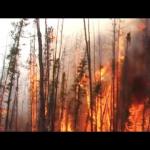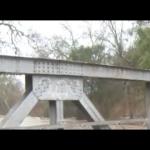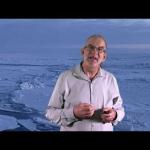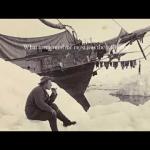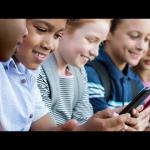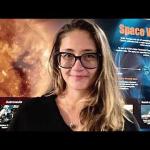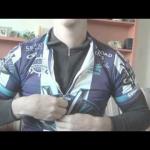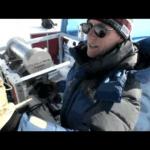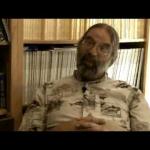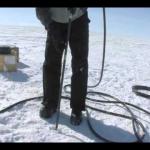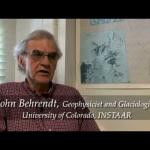Earth Science Stories
This video is part of the Climate Literacy Principles collection by CLEAN. This video highlights Climate Literacy Principle 4.
Science Content Video
This video can be used a stand along video to learn more about fire ecology, or as part of the wildfire Data Puzzles lessons.
Recorded Science Talks
Science Show and Share
In this video, Dr. Kay describes her research as it relates to using observational data and climate models to understand the inequities of climate change, including why the Arctic is warming faster than the rest of the world.
Science Show and Share
This video is part of the Climate Literacy Principles collection by CLEAN. This video highlights the Guiding Principle for Informed Climate Decision
Science Content Video
This video is part of the Climate Literacy Principles collection by CLEAN. This video highlights Climate Literacy Principle 7.
Science Content Video
This video is part of the Climate Literacy Principles collection by CLEAN. This video highlights Climate Literacy Principle 6.
Science Content Video
Understanding of the climate system is improved through observations, theoretical studies & modeling
Science Content Video
This video is part of the Climate Literacy Principles collection by CLEAN. This video highlights Climate Literacy Principle 3.
Science Content Video
This video is part of the Climate Literacy Principles collection by CLEAN. This video highlights Climate Literacy Principle 2.
Science Content Video
This video is part of the Climate Literacy Principles collection by CLEAN. This video highlights Climate Literacy Principle 1.
Science Content Video
In honor of the April 8th, 2024 total solar eclipse event, the NOAA Science On a Sphere program has developed datasets showing cloud cover potential, eclipse paths, and a narrated movie describing the total eclipse phenomenon.
Recorded Science Talks
Science Show and Share
Discover the intricate web of climate, drought, and climate change in the Southwestern US in this engaging 25-minute talk and 20-minute LIVE Q&A. Our seasoned climatologist, Russ Schumacher, will explore Colorado's climate, the significance of mountain snowpack, and the path of water to rivers. Uncover key climate metrics like temperature and precipitation and their impact on water resources. Explore the diverse nature of drought, its definitions, and its evolving face under the influence of climate change.
Recorded Science Talks
Science Show and Share
Join Daniela Pennycook from the Cooperative Institute of Research in Environmental Sciences, Dr. Mimi Hugues, Research Meteorologist at the National Oceanic and Atmospheric Administration, and Andy Anderson, Forecaster at the Sierra Nevada Avalanche Center in this special webinar on Atmospheric Rivers, learn all about what they are, how we measure them, and the impact this environmental phenomenon has had on the U.S. in 2023.
Science Show and Share
Join Lianna Nixxon aboard the Multidisciplinary Drifting Observatory for the Arctic Climate (MOSAiC) Expedition. This planetarium film was rendered in 2D to be viewed on YouTube.
Planetarium Film
Science Content Video
Science Show and Share
This webinar is part of a 4-part series on life at McMurdo Station, Antarctica. Watch this stand-alone video on seasons in the polar regions or watch all four webinars.
Recorded Science Talks
Science Show and Share
This webinar is part of a four-part series on life at McMurdo Station, Antarctica. Watch this stand-alone video on the upper atmosphere or watch all four webinar recordings.
Recorded Science Talks
Science Show and Share
This webinar is part of a 4-part series on life at McMurdo Station, Antarctica. Watch this stand-alone video on seasons in the polar regions or watch all four webinars.
Recorded Science Talks
Science Show and Share
This webinar is part of a four-part series on life at McMurdo Station, Antarctica. Watch this stand-alone video on the upper atmosphere or watch all four webinar recordings.
Recorded Science Talks
Science Show and Share
This webinar is designed to be stand alone resource.
Science Show and Share
In this video, Maxwell Boykoff and Climate Literacy and Energy Awareness Network (CLEAN) program coordinator Gina Fiorile inspire teachers and other audience members by describing the work that scientists and climate activists are doing worldwide.
Science Show and Share
In this stand-alone video, Dr. Matthew Burgess talks about science policy and how math, economics, and climate science are related.
Science Show and Share
In this stand alone webinar, videographer Lianna Nixon presents about her experiences on the MOSAiC Expedition and filming a planetarium show in the Arctic Circle.
Science Show and Share
Videographer Lianna Nixon presented about her experiences on the MOSAiC Expedition and filming a planetarium show in the Arctic Circle.
Recorded Science Talks
Science Show and Share
In this stand-alone video, Dr. Walt Meier presents on Sea Ice (What it is and why we study it).
Science Show and Share
Learn about Greenland and Ice Dymanics with Twila Moon in this stand alone video part of the Science Show & Share program.
Science Show and Share
Este video es parte de la serie Ciencia en casa y se puede ver como un seminario web independiente.
Science Show and Share
In this stand-alone webinar, Dr. Ryan Cassotto presents on: Radars and Remote Sensing of Glaciers.
Science Show and Share
Este video es parte de la serie Ciencia en casa y se puede ver como un seminario web independiente.
Science Show and Share
In this stand-alone webinar, Dr. Julio Sepúlveda presents: What do fossil molecules tell us about Earth’s history and the extinction of dinosaurs?
Science Show and Share
In this stand-alone webinar, Dr. Rosimar Rios-Berrios presented on her research in hurricanes, cyclones, and forecasting.
Science Show and Share
Este video es parte de la serie Ciencia en casa y se puede ver como un seminario web independiente.
Science Show and Share
In this stand-alone webinar, Dr. Hoell presents on Flash Droughts.
Science Show and Share
How does one repair a buoy frozen in sea ice? Click and drag in this 360-degree video from the MOSAiC expedition to find out!
Virtual Field Trip
What's it like working in a remote lab on board a ship in the middle of the Arctic? Click and drag in this 360-degree video to find out.
Virtual Field Trip
Watch MOSAiC researchers work near a meteorological tower on Arctic sea ice in this 360-degree video experience. Click and drag for a full 360-degree view!
Virtual Field Trip
In this stand-alone webinar, Learn about seismology with Mel Zhang, in this 30-minute webinar on seismology - what it is and how Mel got into it.
Science Show and Share
In this stand-alone webinar, Joshua (Shuka) Schwarz is a research scientist in NOAA's Chemical Science Laboratory, talks about wildfire, crop burning smoke, and what it's like to be a scientist.
Science Show and Share
In this stand-alone webinar, Dr. Koontz presented on: Understanding Where Wildfires and Insects Kill Trees Using Drones and Satellites.
Science Show and Share
Watch one of the most extreme soccer games you'll ever see being played on sea ice in the Arctic during the 2019-2020 MOSAiC research expedition. Click and drag for a full 360-degree view!
Virtual Field Trip
Watch as scientists climb a meteorological tower on the ice to repair instruments that collect atmospheric data during the 2019-2020 MOSAiC research expedition. Click and drag for a full 360-degree view!
Virtual Field Trip
In this 360-degree video, scientists park a large weather balloon nicknamed "Miss Piggy" in a tent during the 2019-2020 MOSAiC Arctic research expedition. Click and drag for a full 360-degree view!
Virtual Field Trip
CU Boulder photographer and videographer Amy Richman spent months in the Arctic last year on leg 1 of MOSAiC. This planetarium show allows viewers to experience what Amy witnessed: finding the initial ice floe, setting up the network of instruments and science research camps on the ice, and the seasonal transition from daylight into 24 hours of polar night.
Planetarium Film
Watch a helicopter land on sea ice near MOSAiC researchers in this immersive video captured by scientist Chris Cox. Click and drag for a full 360-degree view!
Virtual Field Trip
This video is part of a collection - “Frozen in the Ice: Exploring the Arctic." Check out the MOSAiC page for more details.
In this specific lesson, Dr. Julienne Stroeve explains her research with MOSAiC in studying Arctic sea ice thickness. Using 40 years of satellite observations, she can track how quickly sea ice volume is declining.
Science Content Video
This video is part of a collection - “Frozen in the Ice: Exploring the Arctic." Check out the MOSAiC page for more details.
In this specific lesson, Dr. Melinda Webster explains sea ice formation. You'll learn about its role in driving ocean circulation, different shapes the ice can take on, and what affects sea ice growth vs. reduction.
Science Content Video
This video is part of a collection - “Frozen in the Ice: Exploring the Arctic." Check out the MOSAiC page for more details.
In this specific lesson, Dr. Bonnie Light adds new meaning to her name! You'll learn about sunlight's vital role in the Arctic system — specifically, how it affects melting in the summer and how different albedos play into this.
Science Content Video
This video is part of a collection - “Frozen in the Ice: Exploring the Arctic." Check out the MOSAiC page for more details.
In this specific lesson, Dr. Jennifer Hutchings describes Arctic sea ice dynamics and how ridges and leads form during the transpolar drift.
Science Content Video
This video is part of a collection - “Frozen in the Ice: Exploring the Arctic." Check out the MOSAiC page for more details.
In this specific lesson, Dr. Jennifer Hutchings defines sea ice kinetics. Throughout the MOSAiC expedition, scientists will be monitoring the kinematics of ice motion and determining the forces involved in opening, shearing, and closing sea ice.
Science Content Video
This video is part of a collection - “Frozen in the Ice: Exploring the Arctic." Check out the MOSAiC page for more details.
In this specific lesson, Dr. Donald Perovich discusses sea ice mass balance. You'll learn about the data collection tools used by MOSAiC scientists including stakes, temperature strings, and autonomous buoys that measure Arctic ice melt and growth through the seasons.
Science Content Video
This video is part of a collection - “Frozen in the Ice: Exploring the Arctic." Check out the MOSAiC page for more details.
In this specific lesson, Dr. Marcel Nicolaus describes his role as MOSAiC's sea ice team leader and why their work is so crucial to the expedition. In studying sea ice, snow, and microorganism habitats, the team hopes to improve Arctic forecasts and better understand how drifting patterns/processes interact.
Science Content Video
This video is part of a collection - “Frozen in the Ice: Exploring the Arctic." Check out the MOSAiC page for more details.
In this specific lesson, Dr. Carin Ashjihan will introduce you to Arctic marine life by highlighting important organisms in the food chain. She'll take you through a 4-step process to answer the question: How can we protect, conserve, and manage Arctic ecosystems in the future?
Science Content Video
This video is part of a collection - “Frozen in the Ice: Exploring the Arctic." Check out the MOSAiC page for more details.
In this specific lesson, Dr. Jeff Bowman will teach you about metabolic challenges and opportunities present for organisms living in Arctic sea ice.
Science Content Video
This video is part of a collection - “Frozen in the Ice: Exploring the Arctic." Check out the MOSAiC page for more details.
In this specific lesson, Dr. Jeff Bowman touches on differences between the adaptive strategies of warm vs. cold-bodied organisms. You'll learn about homeostasis and thermal equilibrium as they relate to the harsh Arctic environment.
Science Content Video
This video is part of a collection - “Frozen in the Ice: Exploring the Arctic." Check out the MOSAiC page for more details.
In this specific lesson, Dr. Hauke Flores describes sea ice as an important driver in Arctic food webs. You'll learn about the serious threats climate change poses to biodiversity and key species dependent on ice cover.
Science Content Video
This video is part of a collection - “Frozen in the Ice: Exploring the Arctic." Check out the MOSAiC page for more details.
In this specific lesson, Dr. Clara Hoppe sheds light on the small but mighty phytoplankton! You'll learn about MOSAiC's special interest in primary production, carbon export, and groundbreaking data scientists expect to glean from the expedition.
Science Content Video
This video is part of a collection - “Frozen in the Ice: Exploring the Arctic." Check out the MOSAiC page for more details.
In this specific lesson, Dr. Jessie Creamean discusses how aerosols affect clouds and precipitation in the atmosphere and why they're important to the Arctic.
Science Content Video
This video is part of a collection - “Frozen in the Ice: Exploring the Arctic." Check out the MOSAiC page for more details.
In this specific lesson, Dr. Brice Loose covers the topics of microbial carbon cycling and ocean circulation. He poses the question: What happens to ecosystems and to ocean biogeochemical cycles in the new Arctic?
Science Content Video
This video is part of a collection - “Frozen in the Ice: Exploring the Arctic." Check out the MOSAiC page for more details.
In this specific lesson, Dr. Gunilla Svensson explains how important Earth system models are to understanding where both global and Arctic climate systems are headed. You'll also learn about the key role MOSAiC's modeling team plays in the expedition.
Science Content Video
This video is part of a collection - “Frozen in the Ice: Exploring the Arctic." Check out the MOSAiC page for more details.
In this specific lesson, Dr. Amy Solomon will teach you about her role in MOSAiC in coordinating international forecasting efforts. Data collected in the Arctic during the expedition form the basis of more accurate regional and global models in the future.
Science Content Video
This video is part of a collection - “Frozen in the Ice: Exploring the Arctic." Check out the MOSAiC page for more details.
In this specific lesson, Dr. Wieslaw Maslowski explains the process of formulating regional models of the Arctic. You'll learn about the relative benefits of such models compared to those at the global scale.
Science Content Video
This video is part of a collection - “Frozen in the Ice: Exploring the Arctic." Check out the MOSAiC page for more details.
In this specific lesson, Dr. Marika Holland will teach you about climate models. She also asks the question: How will climate extremes and environmental changes in the Arctic reverberate around the world?
Science Content Video
This video is part of a collection - “Frozen in the Ice: Exploring the Arctic." Check out the MOSAiC page for more details.
In this specific lesson, Dr. Amy Solomon defines process modeling as an iterative process between observations and theory. You'll learn with specific examples how scientists in both the SHEBA and MOSAiC expeditions move through this process in their work.
Science Content Video
This video is part of a collection - “Frozen in the Ice: Exploring the Arctic." Check out the MOSAiC page for more details.
In this specific lesson, Dr. John Walsh discusses how climate change is apparent throughout the Arctic (air, land, ice, and ocean) and that these changes are already impacting humans, wildlife, and the environment.
Science Content Video
This video is part of a collection - “Frozen in the Ice: Exploring the Arctic." Check out the MOSAiC page for more details.
In this specific lesson, Dr. James Overland discusses how sea ice loss can cause major changes in the Arctic climate — and more specifically, in the polar jet stream.
Science Content Video
This video is part of a collection - “Frozen in the Ice: Exploring the Arctic." Check out the MOSAiC page for more details.
In this specific lesson, Dr. Scott Stephenson focuses on the link between climate change and human activities. You'll learn how melting sea ice contributes to economic transformation of the Arctic.
Science Content Video
This video is part of a collection - “Frozen in the Ice: Exploring the Arctic." Check out the MOSAiC page for more details.
In this specific lesson, Dr. Katrin Vorkamp describes the Arctic as a recipient of global pollution. You'll learn how man-made pollutants contaminate sea ice and the food chains Arctic communities rely on and how governing bodies tackle the issue.
Science Content Video
In this lesson, Dr. Jessica Cross discusses ocean acidification and the dangers it poses to areas like marine life and food security. She'll also teach you about steps communities can take to better understand and face the challenge of climate change.
Science Content Video
This video is part of a collection - “Frozen in the Ice: Exploring the Arctic." Check out the MOSAiC page for more details.
In this specific lesson, Kaare Sikuaq Erickson discusses the Ukpeaġvik Iñupiat Corporation (UIC) and its role in nearly twenty-five thousand research sites in/around Barrow, Alaska. You'll also learn about Arctic indigenous populations that live in areas affected by climate change.
Science Content Video
This video is part of a collection - “Frozen in the Ice: Exploring the Arctic." Check out the MOSAiC page for more details.
In this specific lesson, Alysa McCall and Dr. Steve Amstrup talk all things polar bear! You'll learn how climate change affects them and hear from Trude Hohle about their role in the MOSAiC expedition.
Science Content Video
This video is part of a collection - “Frozen in the Ice: Exploring the Arctic." Check out the MOSAiC page for more details.
In this video, Drs. Anne Gold and Matthew Shupe conclude the series "Frozen in the Ice: Exploring the Arctic" with a summary of the course's major lessons.
Science Content Video
This video is part of a collection - “Frozen in the Ice: Exploring the Arctic." Check out the MOSAiC page for more details.
In this specific lesson, Dr. Sandy Starkweather discusses geopolitics concerning the "Arctic Eight" nations and the six indigenous peoples organizations that make up the Arctic Council.
Science Content Video
This video is part of a collection - “Frozen in the Ice: Exploring the Arctic." Check out the MOSAiC page for more details.
In this specific lesson, Dr. Matthew Shupe broadly defines MOSAiC. From the very first expedition of Fridtjof Nansen to present day, Arctic research remains at the forefront of environmental science and developments in our world's changing climate.
Science Content Video
This video is part of a collection - “Frozen in the Ice: Exploring the Arctic." Check out the MOSAiC page for more details.
In this specific lesson, Dr. John Cassano describes the role of the Arctic in the Earth's energy budget and climate system.
Science Content Video
This video is part of a collection - “Frozen in the Ice: Exploring the Arctic." Check out the MOSAiC page for more details.
In this specific lesson, Dr. Chris Cox will teach you about Earth's atmosphere. You'll learn about its chemical composition, temperature structure, energy fluxes, and how MOSAiC scientists measure the atmosphere's energy budget.
Science Content Video
This video is part of a collection - “Frozen in the Ice: Exploring the Arctic." Check out the MOSAiC page for more details.
In this specific lesson, Dr. Matthew Shupe explains the significance of clouds in the Arctic system and how they play important roles in precipitation, energy transfer, and climate modeling.
Science Content Video
This video is part of a collection - “Frozen in the Ice: Exploring the Arctic." Check out the MOSAiC page for more details.
In this specific lesson, Drs. Jennifer Kay and Ariel Morrison introduce positive and negative albedo feedbacks that are important to the Arctic climate system (and polar bears!).
Science Content Video
This video is part of a collection - “Frozen in the Ice: Exploring the Arctic." Check out the MOSAiC page for more details.
In this specific lesson, Dr. Matthew Shupe breaks down the work of MOSAiC's atmosphere team. Following team goals and using such tools as lasers, radar technology, and weather balloons, scientists can better understand the Arctic system (air, ice, and sea) as a whole.
Science Content Video
This video is part of a collection - “Frozen in the Ice: Exploring the Arctic." Check out the MOSAiC page for more details.
In this specific lesson, Dr. Bill Shaw will teach you about ocean circulation driven by wind patterns and buoyancy.
Science Content Video
This video is part of a collection - “Frozen in the Ice: Exploring the Arctic." Check out the MOSAiC page for more details.
In this specific lesson, Tim Stanton discusses the role of ocean stratification in controlling the way heat interacts with sea ice in the Arctic.
Science Content Video
This video is part of a collection - “Frozen in the Ice: Exploring the Arctic." Check out the MOSAiC page for more details.
In this specific lesson, Tim Stanton talks about the relationship between the ocean and atmosphere in the Arctic. You'll also learn how the presence or absence of ice can affect ocean currents, vertical heat transport, solar radiation, and albedo feedback.
Science Content Video
This video is part of a collection - “Frozen in the Ice: Exploring the Arctic." Check out the MOSAiC page for more details.
In this specific lesson, Dr. Allison Fong introduces you to nutrient biogeochemistry in the Arctic Ocean. You'll learn about nutrient distribution and how it influences primary production.
Science Content Video
This video is part of a collection - “Frozen in the Ice: Exploring the Arctic." Check out the MOSAiC page for more details.
In this specific lesson, Dr. Allison Fong discusses Arctic ice melt and what this means for the surrounding biological environment. You'll ponder the question: Will the Arctic be net primary productive or will it ultimately be a source of carbon?
Science Content Video
This video is part of a collection - “Frozen in the Ice: Exploring the Arctic." Check out the MOSAiC page for more details.
In this specific lesson, Dr. Benjamin Rabe talk about the MOSAiC expedition as a whole and what kinds of things scientists will be studying. From observing tiny microorganisms to larger weather patterns, MOSAiC aims to better understand the Arctic system and how it affects change on a global scale.
Science Content Video
In this webinar recording, Dr. Rick Saltus, and Dr. Neesha Schnepf presented on their recent research in geomagnetism and talk about their crowd-sourcing app: CrowdMag
Recorded Science Talks
Science Show and Share
In this stand-alone webinar, Mylène Jacquemart talked about her research working to ID triggers of sudden glacier detachments: destructive glacial process that buried kilometers of Alaskan forest.
Science Show and Share
AWI's Thomas Krumpen discusses how scientists use satellite information to identify ice floes in the Arctic Ocean.
Science Content Video
In this stand-alone webinar, Dr. Lincoln Pitcher presented on recent research about meltwater production, transport and export from the Greenland Ice Sheet.
Science Show and Share
In this stand-alone webinar, Dr. Noah Fierer presented on his recent work looking at the microorganisms living in soils of Antarctica, one of the driest and coldest places on Earth.
Science Show and Share
In this stand-alone webinar recording, Dr. Peter Martin presented on his research in and of New Guinea. In particular, when did it form and how it impacted historical climate change.
Science Show and Share
In this webinar, Dr. Amy Butler talked about the Polar Vortex. She focused on why she became an atmospheric scientist, presented a brief overview of the stratosphere and the ozone layer, and discussed how we might use information about the stratospheric polar vortex to make extended-range weather forecasts.
Science Show and Share
In this stand-alone webinar, Dr. Elizabeth Thompson discussed how learning about weather can also teach us a lot about the ocean.
Science Show and Share
In this stand-alone webinar, Janice Bytheway talked about precipitation - how it forms, and a little bit on how we observe and predict it.
Science Show and Share
In this stand-alone webinar, Dr. Ted Scambos presented a 'science travelogue' for the continent of Antarctica.
Science Show and Share
Alberto Enrquez, helicopter mechanic and technical crew member on Legs 1 and 4 of the #MOSAiCExpedition, talks about what it takes to use helicopters for research in the Arctic.
Science Content Video
Hear from the Baker on Leg 1 of the MOSAiC Expedition. Multidisciplinary Drifting Observatory for the Study of Arctic Climate is an international expedition to study the Arctic climate system, from ocean to ice to atmosphere. 500+ scientists...19 nations...12 months...
Science Content Video
This video serves as an introduction to the Water in the Western US lecture series. The instructors Anne Gold and Eric Gordon explain the importance of learning about water in the Western United States.
Science Content Video
Eric Gordon and Anne Gold give an overview on the geographic features that define the Western United States, both physical and political.
Science Content Video
In this video Anne Gold and Eric Gordon give a brief review on the different processes involved in the water cycle, specifically in the Western United States.
Science Content Video
In this video, Dr. Anne Gold from CU Boulder explains the importance of infrastructure for the storage and delivery of water in the dry Western United States. Learn all about the history of this infrastructure and how it has helped societies in the Western United States. This video is part of the Water in the Western US lecture series.
Science Content Video
In this video, Assistant Attorney General Kate Ryan from the Colorado Supreme Court gives an overview of water rights across the Western US and the Prior Appropriation Doctrine. Learn why this doctrine is important for learning about water in the west. This video is part of the Water in the Western US project.
Science Content Video
Interstate Streams Division Administrator for the Wyoming State Engineer's Office, Sue Lowry, gives a lecture on important things to know about how interstate water conflicts can be resolved in the United States. This video is part of the Water in the Western US lecture series.
Science Content Video
This lecture by Dr. Mark Squillace of the University of Colorado Law School covers water, public rights, and the Endangered Species Act. This video is part of the Water in the Western US lecture series.
Science Content Video
Jeff Lukas with Western Water Assessment discusses how the climate of the Western United States affects the availability of water resources. Learn more about the natural processes that drive our water cycle in the Western United States. This video is part of the Water in the Western US lecture series.
Science Content Video
This lecture by Anne Gold discusses water quality challenges in the Western United States and how that affects aquatic habitats and drinking water. This video covers streamflow, salinity, pollution, sediment load, and more. This video is part of the Water in the Western US lecture series.
Science Content Video
In this video, Dr. Ben Livneh from CIRES at the University of Colorado Boulder gives an overview of all things groundwater in the Western United States. This video is part of the Water in the Western US lecture series.
Science Content Video
In this lecture, Eric Gordon covers how the state of watersheds in the west can impact life in the surrounding areas. This includes an overview of the effects of wildfires, bark beetle infestations, and desert dust deposition on snow on the watershed. This video is part of the Water in the Western US lecture series.
Science Content Video
Research scientist Dr. Kelly Mahoney explores rivers and flash flooding in the west. This video covers different kinds of floods, what causes flash flooding, why flash flooding is more of a risk in the Western US, and what happened in the 2013 Front Range floods. This video is part of the Water in the Western US lecture series.
Science Content Video
This video features Eric Gordon, who delivers a lecture on the effects that climate change will have on water in the Western United States. This is part of the Water in the Western US lecture series.
Science Content Video
Dr. Reagan Waskom, director of the Colorado Water Institute at Colorado State University, provides an overview on agricultural water use in the west. Learn about types of agriculture, how water is used in agriculture, and why so much water is needed for agriculture in the west. This video is part of the Water in the Western US lecture series.
Science Content Video
In this lecture, Dr. Joanna Endter-Wada from Utah State University discusses water demand for urban areas. Learn about the nature of urban water demand, urban water management, and more. This is part of the Water in the Western US lecture series.
Science Content Video
CIRES' Anne Gold delivers a lecture on the physical geographic overview of the Colorado River Basin and the legal and political aspects of water management in the west. This is part of the Water in the Western US lecture series.
Science Content Video
In this video, Dr. Paul Lander from the University of Colorado Boulder gives a lecture on the history of two important dams: Hoover and Glen Canyon. This is part of the Water in the Western US lecture series.
Science Content Video
This video features Jeff Lukas from CIRES' Western Water Assessment who discusses the overall climate patterns of the Colorado River Basin, and how we can use this information to study the past, present, and future climate of the western United States. This video is part of the Water in the Western US lecture series.
Science Content Video
In this lecture, Dr. Ken Novak from the US Bureau of Reclamation examines a case study on the water supply and demand of the Colorado River Basin. Learn about how increasing demand for water affects reservoirs and other infrastructure. This is part of the Water in the Western US lecture series.
Science Content Video
This lecture by Dr. Jack Schmidt from Utah State University gives an overview on the physical attributes of the Colorado River and how that affects river restoration. This video is part of the Water in the Western US lecture series.
Science Content Video
In this video, Sheila Murphy from the US Geological Survey gives a lecture on the effects that wildfire has on water quality and quantity. This lecture is part of the Water in the Western US project.
Science Content Video
Peter Goodwin and Phil Isenberg of the Delta Stewardship Council gave this lecture on the story of the California Bay Delta. They discuss complex management issues with California's water supply and more. This video is part of the Water in the Western US project.
Science Content Video
In this part of the Water in the Western US lecture series, Eric Gordon from the University of Colorado Boulder discusses the rapid growth of Las Vegas and the history of its water use. This western water story can help us learn about how desert towns can improve their water sustainability.
Science Content Video
In this lecture, Kristen Averyt from the University of Colorado Boulder gives a lecture on the link between water and energy, also known as the Water-Energy Nexus. Learn about how water can generate power. This video is part of the Water in the Western US project.
Science Content Video
In the final video lecture of the series, Eric Gordon and Anne Gold from CIRES wrap up the series by giving an overview of the previous lectures and discussing possibilities of future challenges facing water in the west.
Science Content Video
This peer-reviewed educational video describes sea ice and land ice processes that are unique to polar regions.
Science Content Video
This peer-reviewed educational video introduces feedbacks that are important in the Arctic climate system.
Science Content Video
This peer-reviewed educational video explains human-caused climate change including the greenhouse effect.
Science Content Video
What is wind, and what causes it? Why are wind patterns different in various parts on Earth? In this video, we explain how pressure systems generate the movement of air, we discuss the impacts that surface roughness and daily cycles of heating and cooling have on wind speed and how the Coriolis force steers the global wind circulation.
Science Content Video
What is wind, and what causes it? Why are wind patterns different in various parts on Earth? In this video, we explain how pressure systems generate the movement of air, we discuss the impacts that surface roughness and daily cycles of heating and cooling have on wind speed and how the Coriolis force steers the global wind circulation.
Science Content Video
How do wind turbines work? How can the wind’s kinetic energy be converted into electrical energy? In this video, we discuss the design of wind turbines, the basic physics behind the electricity production and what criteria are being used to locate wind farm by giving different examples from across the US.
Science Content Video
Aimee Voth Siebert, Behavior Health and Inclusion Worklead at the Colorado Department of Public Health, describes what resilience looks like in the health and social sector in Colorado.
Science Content Video
Alison George, Housing Director for the Colorado Department of Local Affairs, describes what resilience looks like in the housing sector in Colorado.
Science Content Video
Kate Busse (Local Resiliency Program Manager) and Rob Pressly (Resiliency Program Manager) with the Colorado Resiliency Office at the Colorado Department of Local Affairs describe the Colorado Resiliency Framework.
Science Content Video
Danielle Lendriet, Regional Coordinator and Analyst at the Colorado Office of Economic Development and International Trade, describes what resilience looks like in the economic sector in Colorado
Science Content Video
Jeff Lukas, a scientist at the Western Water Assessment, discusses flooding in Colorado for the HEART Force project.
Science Content Video
Doug Kluck, the Regional Climate Services Director at the National Oceanic and Atmospheric Administration, discusses drought in Colorado for the HEART Force Project.
Science Content Video
Kevin Houck, Chief of Watershed and Flood Protection at the Colorado Water Conservation Board, describes what resilience looks like for watersheds and natural resources in Colorado.
Science Content Video
Lizzie Kemp, Resilience Program Coordinator at the Colorado Department of Transportation, describes what resilience looks like for the infrastructure sector in Colorado.
Science Content Video
Megan Cattau, Postdoctoral Research Associate at the Earth Lab at University of Colorado Boulder, discusses wildfire in Colorado for the HEART Force project.
Science Content Video
Waverly Klaw, Hazards and Land Use Planner with the State of Colorado Department of Local Affairs, describes what resilience looks like for the community sector in Colorado.
Science Content Video
This video is part of a collection - “Frozen in the Ice: Exploring the Arctic." Check out the MOSAiC page for more details.
In this specific lesson, Dr. Mark Serreze describes the Arctic as a highly varied environment undergoing some rapid changes. You'll learn that MOSAiC seeks to answer the questions: Why is the Arctic changing, and where are we headed?
Science Content Video
This video is part of a collection - “Frozen in the Ice: Exploring the Arctic." Check out the MOSAiC page for more details.
In this specific lesson, Jonathan Griffith tells the story of Fridtjof Nansen's trailblazing journey through the Arctic in the 1893 Fram Expedition.
Science Content Video
Si te llaman la atención los eventos del tiempo como las tormentas eléctricas, los huracanes y los tornados, esta presentación es para ti. Arelis M. Rivera-Giboyeaux, meteoróloga del Departamento de Energía compartirá su experiencia en el campo de las ciencias atmosfericas.
Science Show and Share
Join Dr Rick Saltus to learn about citizen science with CrowdMag. Everyone is invited to use your smartphone to measure magnetic fields around you and send your data to scientists.
Science Content Video
CIRES scientist Dr. Alessandra Pacini explains what space weather is, how it affects us here on Earth.
Science Content Video
The conclusion to the Polar Visions series interviews citizens and climate scientists about how we can all make a difference in our world and slow climate change.
Science Content Video
This video is part of the Polar Visions series on climate change. This video details the process and the importance of ice core drilling to paleoclimatology.
Science Content Video
This video is part of the Polar Visions series on climate change. Learn about how changes in polar sea ice shift the Earth's climate.
This video is part of the Polar Visions series on climate change. Watch as climate scientists discuss how they track moving glaciers in the Arctic to better understand different layers in the ice.
Science Content Video
This video is part of the Polar Visions series on climate change. This video gives a short overview on the history of the poles, including the exploration of Antarctica.
Science Content Video
